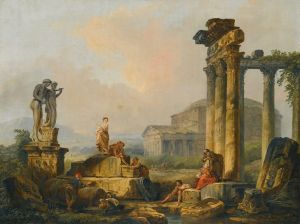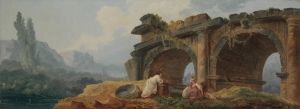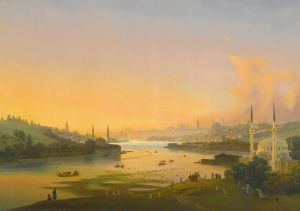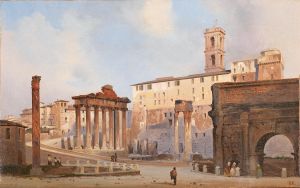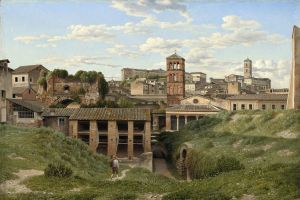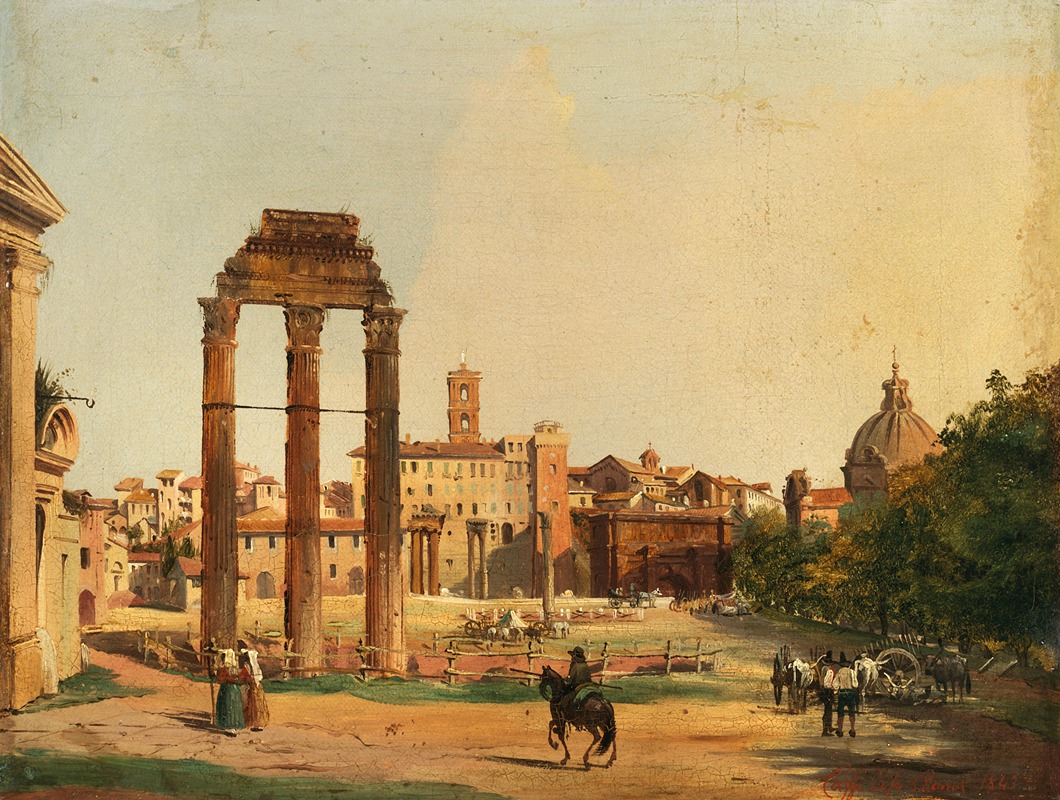
Rome, a View of the Roman Forum with the Temple of Castor and Pollux
A hand-painted replica of Ippolito Caffi’s masterpiece Rome, a View of the Roman Forum with the Temple of Castor and Pollux, meticulously crafted by professional artists to capture the true essence of the original. Each piece is created with museum-quality canvas and rare mineral pigments, carefully painted by experienced artists with delicate brushstrokes and rich, layered colors to perfectly recreate the texture of the original artwork. Unlike machine-printed reproductions, this hand-painted version brings the painting to life, infused with the artist’s emotions and skill in every stroke. Whether for personal collection or home decoration, it instantly elevates the artistic atmosphere of any space.
Ippolito Caffi was an Italian painter known for his detailed and atmospheric cityscapes and landscapes. One of his notable works is "Rome, a View of the Roman Forum with the Temple of Castor and Pollux." This painting captures a historical view of the Roman Forum, a central area in ancient Rome that was the nucleus of Roman public life.
The Roman Forum, or Forum Romanum, was the center of political, commercial, and judicial life in ancient Rome. It was surrounded by several important ancient government buildings and was the site of many significant events in Roman history. The Temple of Castor and Pollux, depicted prominently in Caffi's painting, was one of the key structures in the Forum. This temple was originally built in 484 BC and was dedicated to the twin brothers Castor and Pollux, who were considered the protectors of Rome.
Ippolito Caffi's painting showcases the ruins of the Temple of Castor and Pollux, emphasizing the grandeur and historical significance of the site. The temple's three surviving columns are a focal point in the composition, standing tall against the backdrop of the Forum. These columns are part of what remains of the temple's original structure, which was rebuilt several times throughout history, most notably by Emperor Tiberius in 6 AD.
Caffi's work is characterized by his precise attention to architectural details and his ability to capture the atmosphere of the scene. In "Rome, a View of the Roman Forum with the Temple of Castor and Pollux," he uses light and shadow to highlight the textures of the ancient ruins and to convey a sense of the passage of time. The painting also includes other elements of the Forum, such as the Basilica Julia and the Arch of Septimius Severus, providing a broader context of the historical site.
Ippolito Caffi was born in Belluno, Italy, in 1809 and studied at the Academy of Fine Arts in Venice. He traveled extensively throughout his life, visiting cities such as Rome, Naples, and Constantinople, and his works often reflect his experiences and observations from these travels. Caffi's paintings are known for their vivid realism and his ability to capture the essence of the places he depicted.
"Rome, a View of the Roman Forum with the Temple of Castor and Pollux" is an excellent example of Caffi's skill in rendering architectural subjects and his deep appreciation for historical sites. The painting not only serves as a visual record of the Roman Forum but also as a testament to the enduring legacy of ancient Roman architecture and its influence on subsequent generations.
Caffi's works are held in various collections, including museums and private collections, and continue to be appreciated for their historical and artistic value. His contribution to the genre of cityscape painting remains significant, and his depictions of ancient ruins offer valuable insights into the architectural heritage of the past.






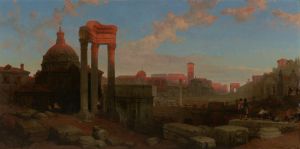
![Interior of the mosque of the Metwalys [Metwalis].](/imgs/217497/s/david-roberts-interior-of-the-mosque-of-the-metwalys-metwalis-d41ed7bd.jpg)
